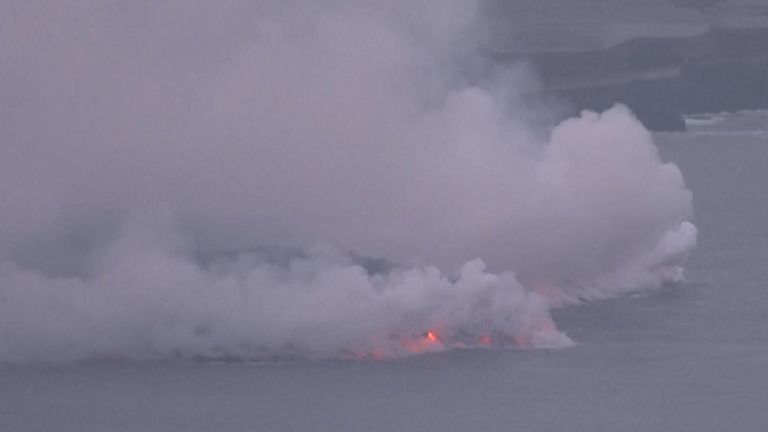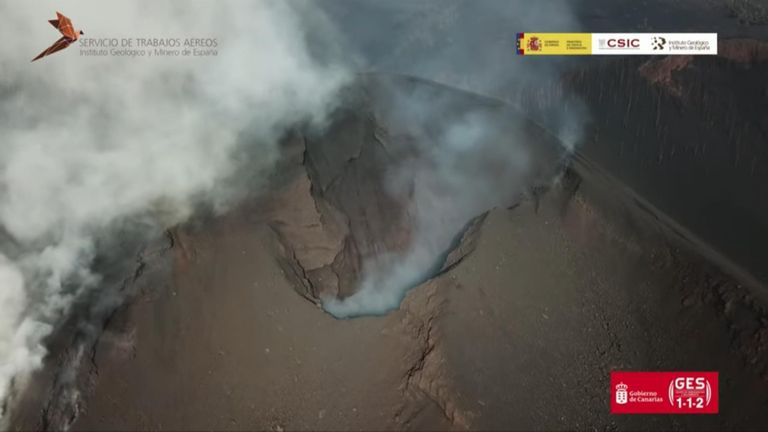People on the Spanish island of La Palma have been urged to stay indoors due to toxic gas fears after lava from an erupting volcano reached the Atlantic Ocean.
Scientists have warned of breathing difficulties and irritation to eyes and skin due to the chemical reaction caused by the lava from the Cumbre Vieja volcano reaching the sea.
The red-hot current has a temperature of more than 1,000C (1,832F) as it meets the ocean, which is around 20C (68F).
Along with warnings of toxic hydrochloric acid vapour being released into the atmosphere, officials in the Playa Nueva area also said there could be explosions.
The authorities said everyone within a two-mile (3.5km) radius of where the lava met the sea must stay indoors – and must try to close up gaps in their homes in an effort to keep out the toxic gases.
Nine days after it started to flow down the mountain, the lava fell into the ocean off a cliff at around 11pm on Tuesday, creating large clouds of white steam.
Thousands of people had been evacuated, and three coastal villages locked down in anticipation of the lava meeting the sea. No injuries have been reported.
Sky’s Becky Cotterill, reporting from an area close to the eruption, said the direction of the wind was blowing the toxic gases out to sea on Wednesday morning rather than inland, but there are fears the conditions could change.
“There is a concern about toxic gas coming off the ocean,” she added.
Cotterill continued: “The lava has been slow-moving and changing course, but at 11pm last night it did finally drop off a cliff about a hundred feet high into the sea, creating what essentially looked like a lava waterfall.
“Scientists were really concerned about that because when lava hits the water it creates a thermal shock.
“That shock releases toxic gases that contain hydrochloric acid and it’s very dangerous to breathe in and also dangerous if it gets in your eyes or on your skin.
“Residents in the surrounding areas have been told to stay inside.”
Nearly 600 houses and banana plantations have already been destroyed in La Palma, which neighbours Tenerife in the Canary Islands archipelago off the North African coast and is home to 85,000 people.
Following the eruption on 19 September, more than 6,000 people were evacuated from the surrounding area.
Spain classified La Palma as a disaster zone on Tuesday, in a move which will trigger financial support for the island.
Meanwhile, one resident, who was evacuated last week from the village of Tacande de Arriba, was delighted to find his house still standing and his pet cats unscathed.
Gert Waegerle fled the advancing lava with his five turtles – but had to leave the cats behind.
The 75-year-old said: “I am super happy because in the end, everything turned out fine. It’s a good feeling, a fantastic feeling.”












